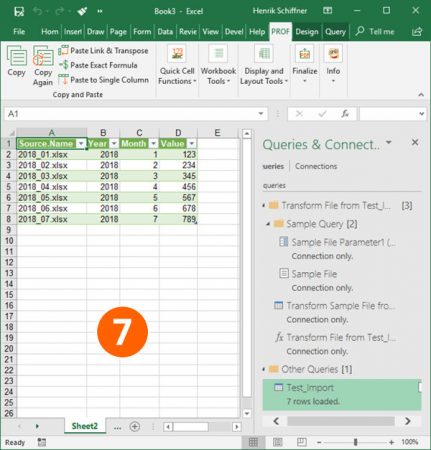5 Ways to Consolidate Excel Sheets in One

Excel is an incredibly versatile tool used by professionals across industries to manage, analyze, and present data effectively. While Excel offers a myriad of functions, one common challenge is dealing with data spread across multiple sheets or workbooks. Consolidating these sheets into one can streamline your workflow, improve data analysis, and make your reports more coherent. Here are five effective methods to consolidate Excel sheets into one, each serving different needs and scenarios:
1. Using Excel’s Built-in Consolidate Feature

Excel provides a Consolidate feature that can combine data from multiple ranges into a single master worksheet. This method is particularly useful for summing or averaging data from several sheets without having to manually copy and paste.
- Select the cell where you want the consolidated data to appear.
- Go to the Data tab, and click on Consolidate.
- Choose the function (e.g., Sum, Average, etc.) from the dropdown menu.
- Click in the Reference box, then go to the first sheet or workbook, and select the range to consolidate. Press Add.
- Repeat for each additional range from different sheets or workbooks.
- Once all ranges are added, ensure the Top row and Left column are selected if your data uses headers, then click OK.
💡 Note: The consolidate feature does not link data dynamically; updates in source sheets won't reflect in the consolidated sheet automatically.
2. Leveraging Power Query for Data Consolidation


Power Query, a tool for data transformation in Excel, offers a powerful way to combine multiple sheets into one, even if they are in different workbooks:
- From the Data tab, select Get Data > From File > From Workbook.
- Navigate to the workbook with multiple sheets, select it, and click Import.
- Use the Power Query Editor to filter, merge, or transform data as needed. You can append sheets using the Append Queries option.
- Once your data is ready, click Close & Load to place the consolidated data into a new sheet.
🌟 Note: Power Query can refresh data dynamically from the source files, making it ideal for regularly updated datasets.
3. Writing VBA Macros

If you’re familiar with VBA (Visual Basic for Applications), you can automate the consolidation process using macros:
- Press Alt + F11 to open the VBA editor.
- Insert a new module from the Insert menu.
- Write or paste VBA code to loop through sheets, copy data, and paste it into a master sheet.
- Run the macro by pressing F5 or by assigning it to a button in your worksheet.
Sub ConsolidateSheets()
Dim ws As Worksheet
Dim masterWs As Worksheet
Dim lastRow As Long
Dim lastCol As Long
Set masterWs = ThisWorkbook.Sheets("MasterSheet")
For Each ws In ThisWorkbook.Sheets
If ws.Name <> masterWs.Name Then
lastRow = ws.Cells(ws.Rows.Count, "A").End(xlUp).Row
lastCol = ws.Cells(1, ws.Columns.Count).End(xlToLeft).Column
masterWs.Cells(Rows.Count, "A").End(xlUp).Offset(1, 0).Resize(lastRow, lastCol).Value = ws.Range("A1").Resize(lastRow, lastCol).Value
End If
Next ws
End Sub
4. Using Excel Add-ins

There are several add-ins available, like the Power Add-in Consolidator or Ablebits Data Merge Wizard, that can simplify the consolidation process with point-and-click interfaces:
- Download and install the add-in of your choice.
- Select the sheets or workbooks you wish to consolidate from the add-in interface.
- Follow the steps provided by the add-in to merge data into a new sheet.
🔍 Note: Add-ins might have subscription or one-time payment models, so ensure you review the features against your budget.
5. Manual Consolidation

When dealing with smaller datasets, manual consolidation can be straightforward:
- Open the first workbook and sheet you wish to consolidate.
- Copy the data by selecting the range, right-clicking, and choosing Copy.
- Open or create a new workbook or sheet, and paste the data into the appropriate location.
- Repeat for each sheet or workbook, ensuring alignment of data if needed.
🛠️ Note: Manual consolidation is not scalable for large datasets but provides full control over the process.
Having explored these five methods, it's evident that consolidating Excel sheets can be approached in various ways, each suited to different data scenarios and user expertise levels. Whether you opt for the built-in features, external add-ins, or the scripting power of VBA, Excel offers a solution to fit your needs. This consolidation not only saves time but also ensures data integrity and coherence in your analytical work.
By integrating these techniques into your routine, you'll find Excel to be an even more powerful tool for managing complex data tasks. Remember, the choice of method should align with your comfort level, the size of your dataset, and how frequently the data needs updating.
Can I consolidate sheets from different Excel files?

+
Yes, methods like Power Query, VBA, and some add-ins allow you to consolidate data from multiple Excel files.
Will changes in source sheets update in the consolidated sheet?

+
Not automatically with the built-in Consolidate feature. However, using Power Query or certain VBA scripts can enable dynamic updating.
Is VBA difficult to learn for consolidating sheets?

+
While VBA has a learning curve, for specific tasks like sheet consolidation, you can start with pre-written macros and adapt them to your needs with basic understanding.



